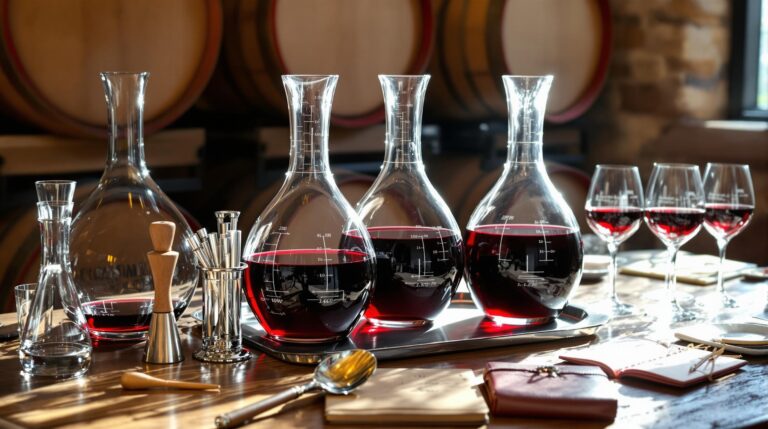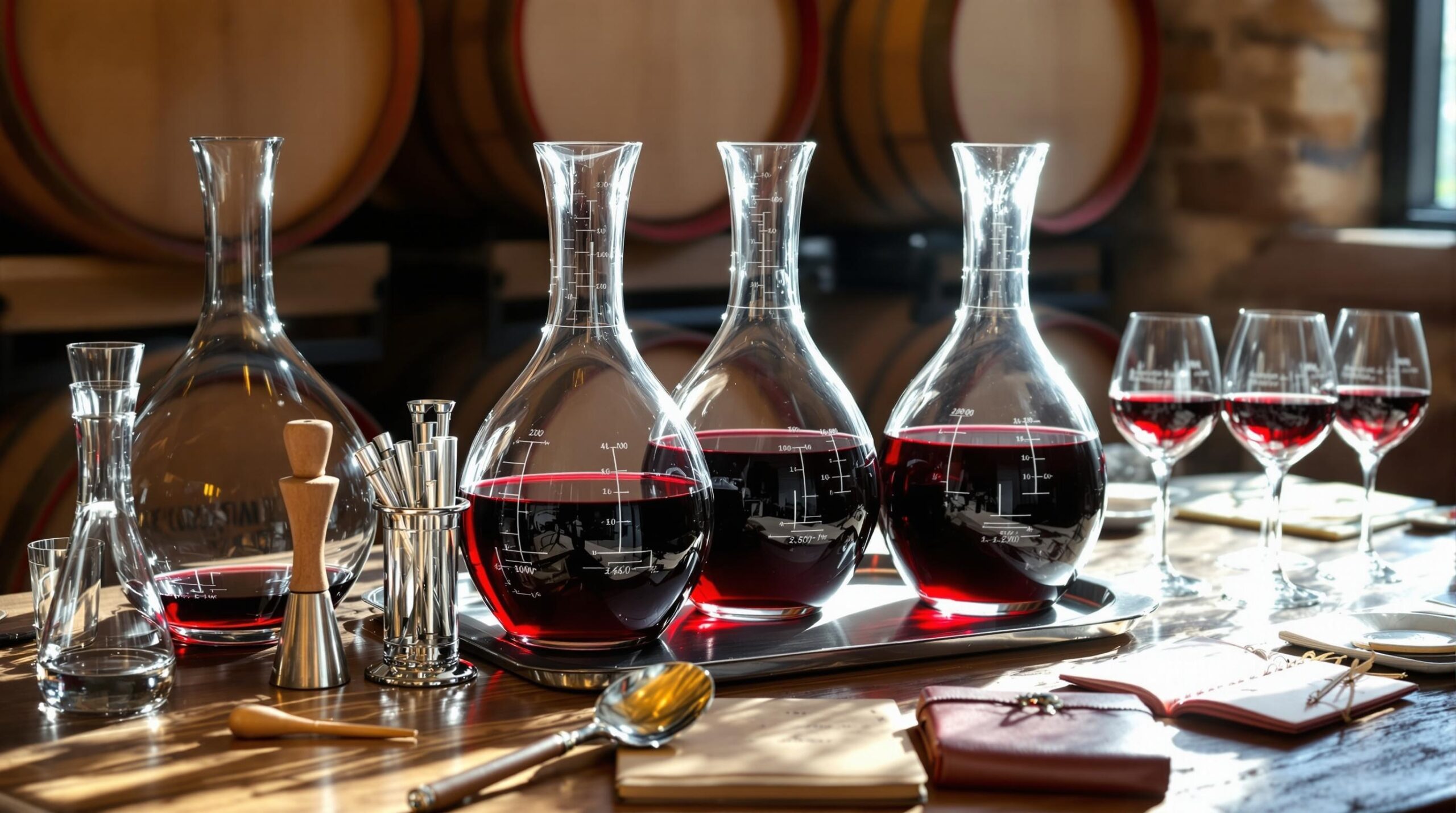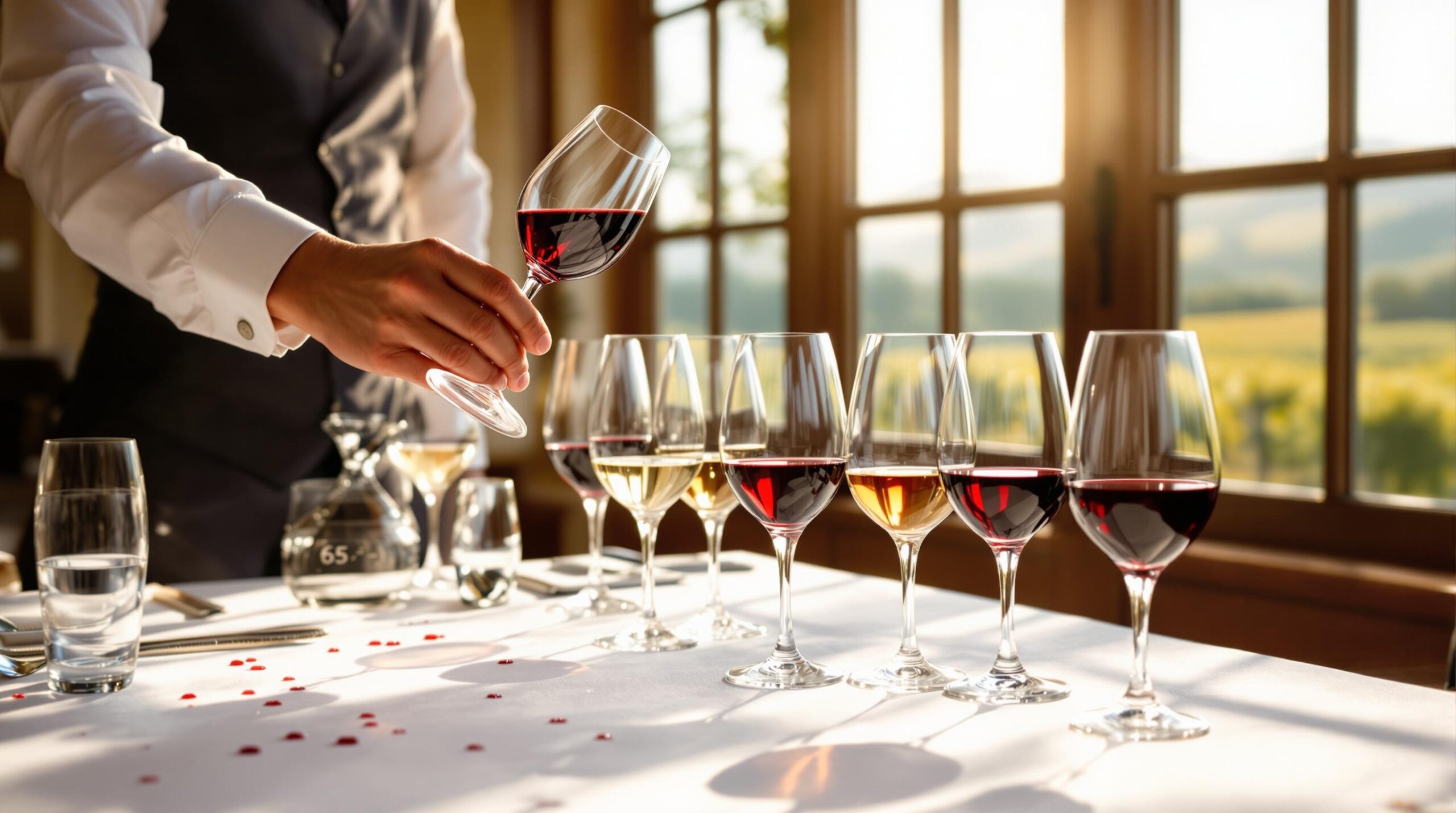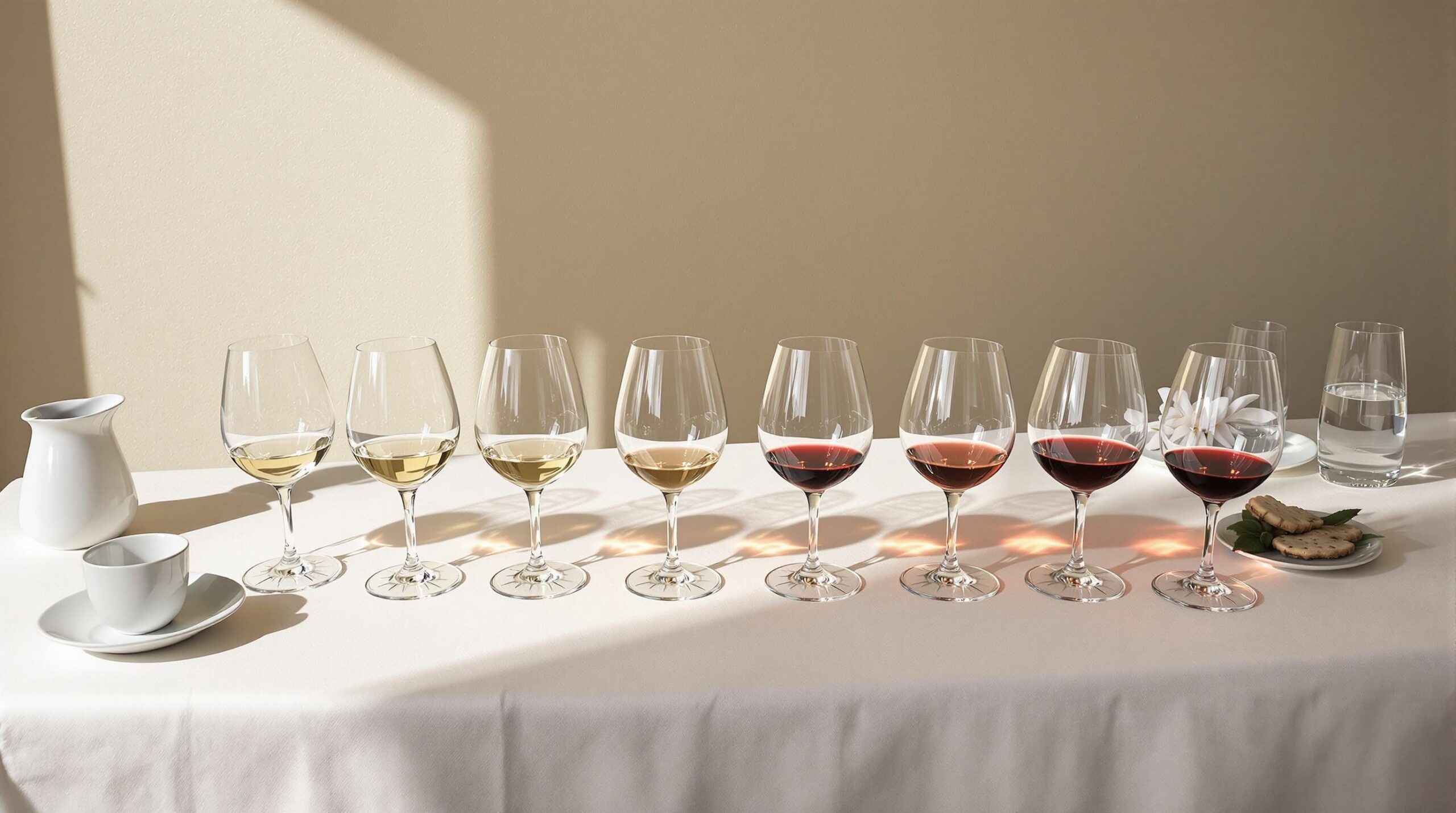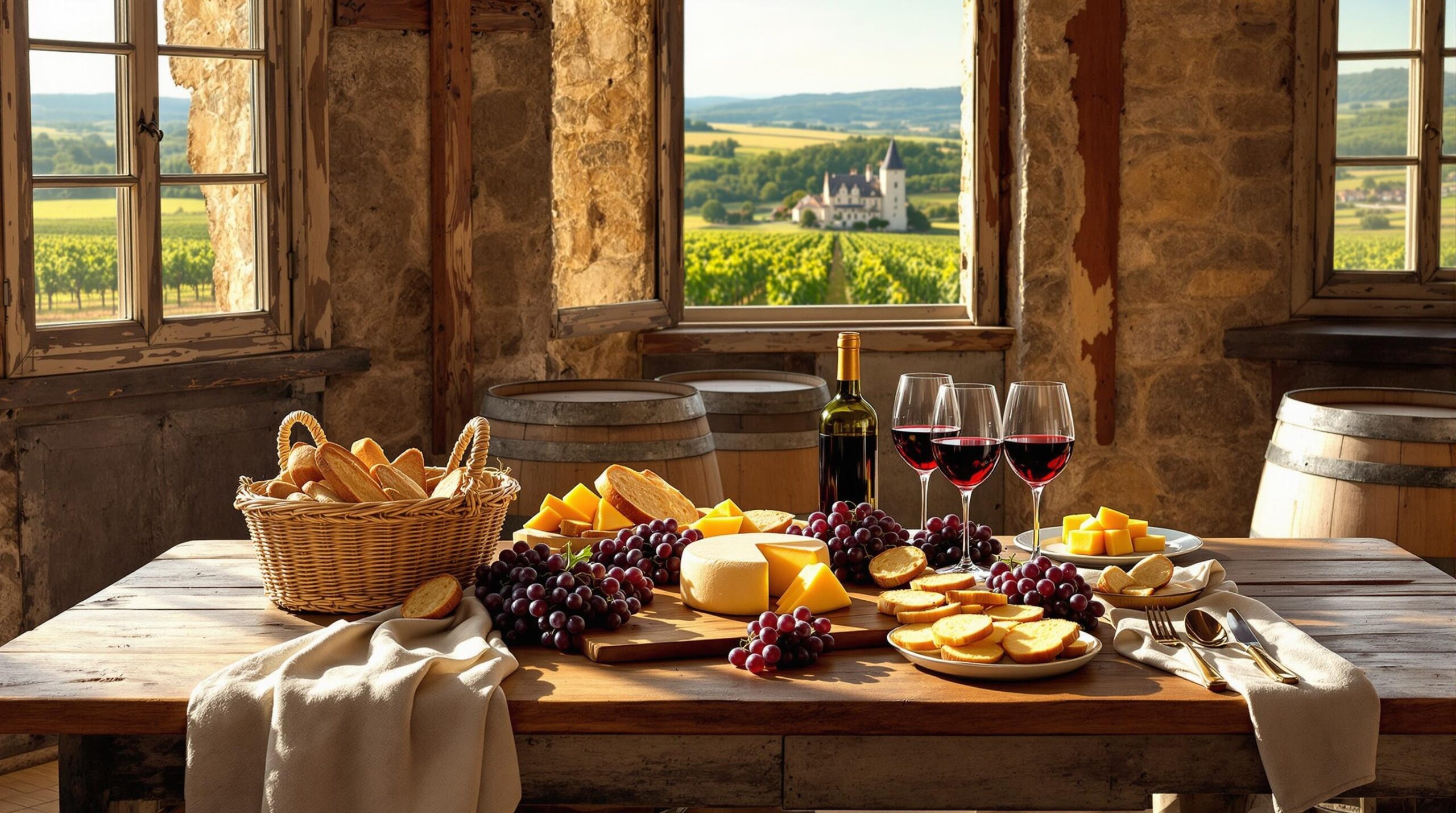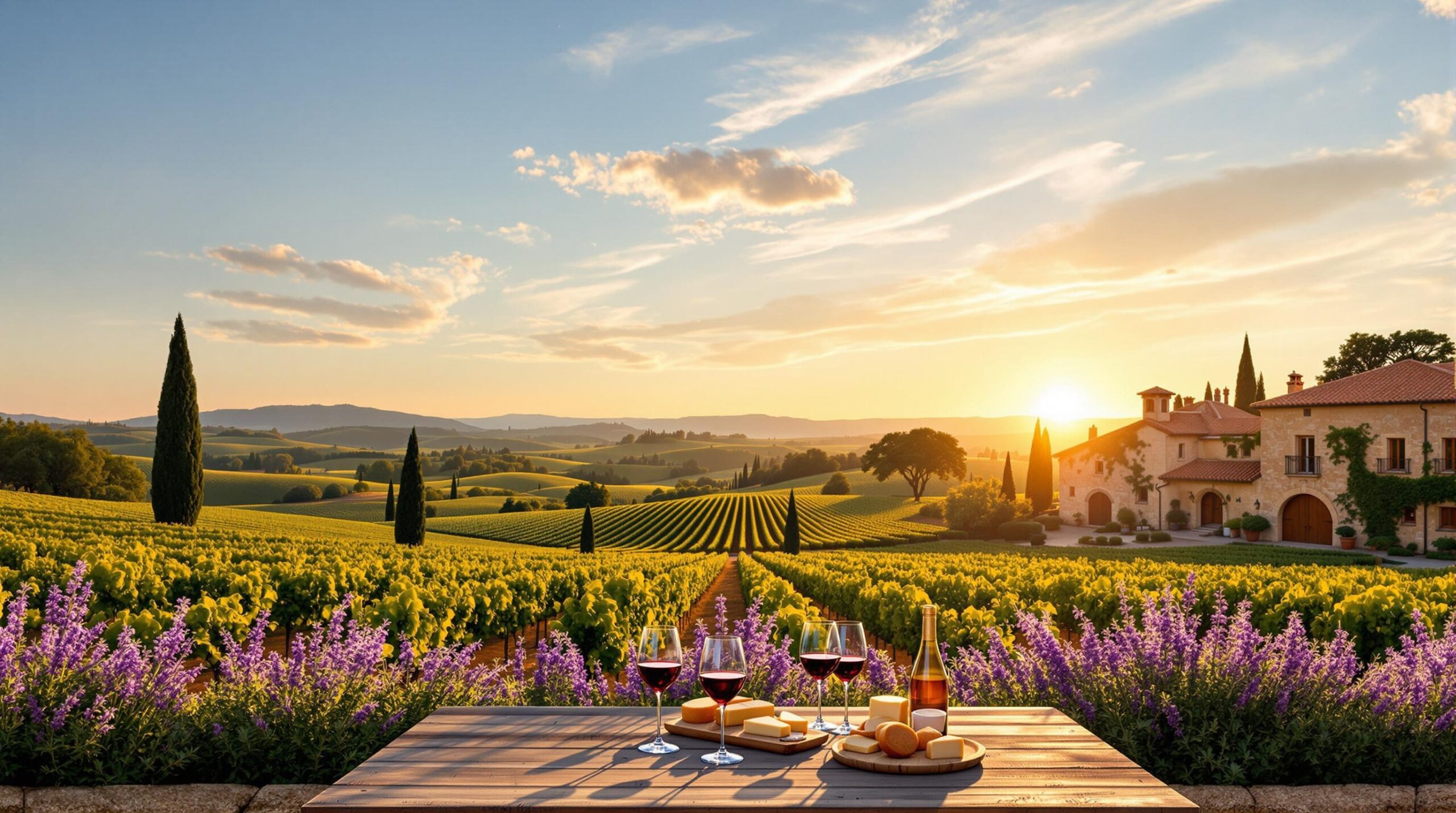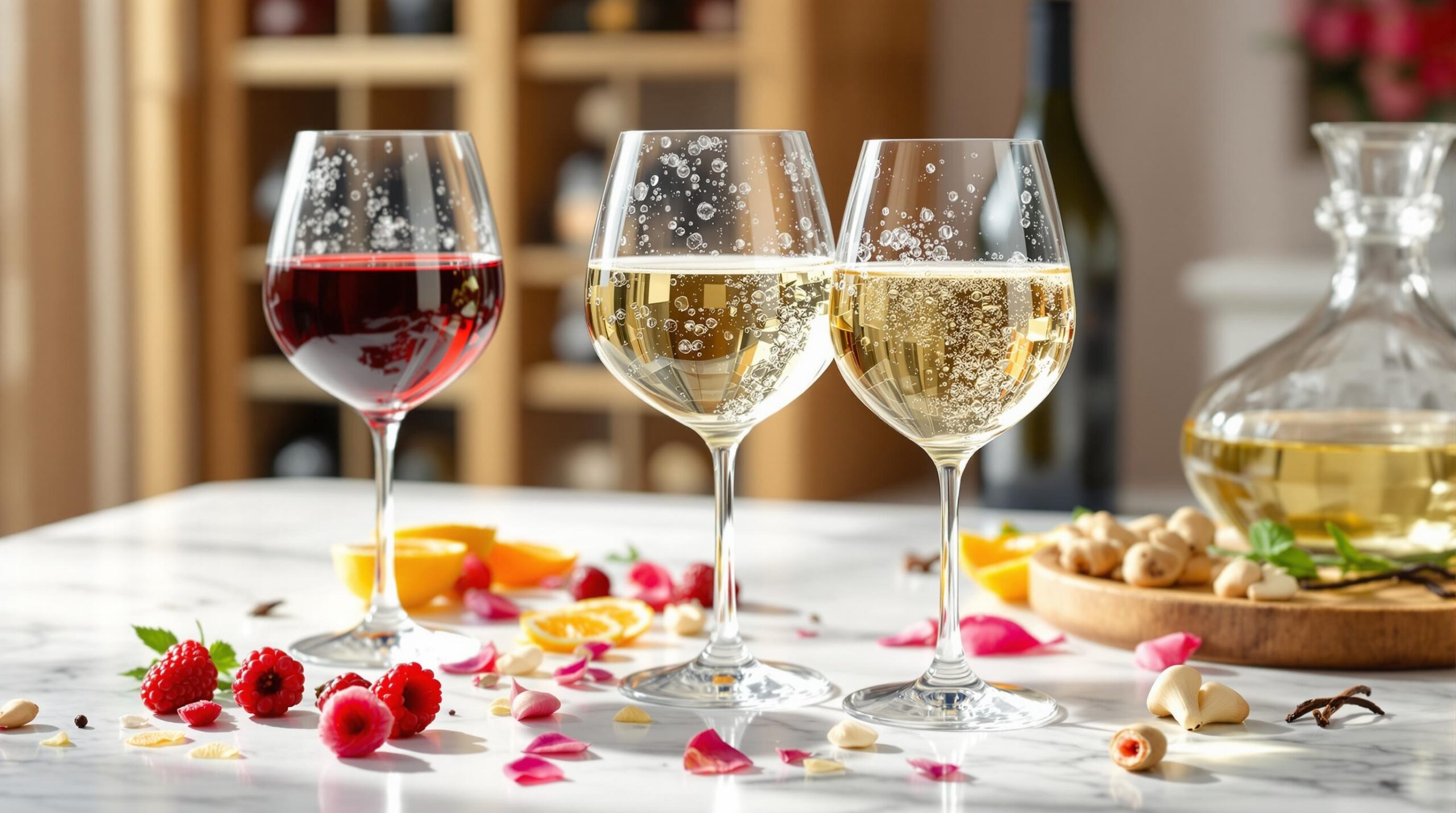Wine blending workshops offer a rare chance to step into a winemaker’s shoes and create your own custom blend. This quick guide explores what these workshops entail and how to make the most of this unique experience.
What to Expect at a Wine Blending Workshop
A typical session runs 2-3 hours and includes education about different grape varieties and their characteristics. Participants receive individual blending stations with measuring tools, several wine varieties, and guidance from experienced vintners. Most workshops provide 3-5 different single varietal wines for blending experiments.
Common Workshop Components:
• Basic wine tasting techniques
• Understanding wine characteristics
• Measuring and blending tools
• Individual workstations
• Take-home bottle of your blend
Essential Wine Varieties for Blending
The most commonly used varieties in blending workshops include:
| Red Wine | Characteristics |
|---|---|
| Cabernet Sauvignon | Structure, tannins, black fruit |
| Merlot | Softness, plum notes |
| Syrah | Spice, body, pepper notes |
Basic Blending Ratios:
• Primary Variety: 40-60%
• Secondary Variety: 20-40%
• Accent Variety: 10-20%
Mastering Basic Blending Techniques
Start with small test portions before committing to larger amounts. Use graduated cylinders or measuring pipettes for precise amounts. Take detailed notes of successful combinations:
Key Steps:
• Begin with base wine (usually 50%)
• Add secondary wine in 10% increments
• Taste and adjust between additions
• Record exact measurements
• Let blend rest 5-10 minutes before final tasting
Remember to:
• Clean glasses between tastings
• Use room temperature wines
• Keep water nearby for palate cleansing
• Take detailed notes of successful combinations
These first four sections provide fundamental knowledge about wine blending workshops and prepare participants for the hands-on experience. The remaining sections will cover advanced techniques, equipment recommendations, troubleshooting, and ways to continue the blending journey at home.
Assessing and Adjusting Your Blend
• Taste evaluation criteria: balance, complexity, finish
• Identifying wine flaws and imbalances
• Making real-time adjustments based on tasting notes
• Professional tasting techniques for amateur blenders
Temperature and Time Considerations
• Optimal serving temperatures for different wine varieties
• Resting periods between blending and tasting
• Impact of temperature on blend characteristics
• Storage recommendations for blended wines
| Wine Type | Ideal Temperature | Rest Time |
|---|---|---|
| Red Blends | 62-68°F | 15-20 minutes |
| White Blends | 45-50°F | 10-15 minutes |
Common Blending Mistakes to Avoid
• Over-blending multiple varieties
• Ignoring temperature guidelines
• Rushing the tasting process
• Not keeping accurate measurements
• Failing to clean equipment between trials
Problem-Solving Tips:
• Start with smaller test portions
• Keep detailed notes of each attempt
• Use fresh glasses for each tasting
• Allow proper rest time between adjustments
Taking Your Blending Skills Home
Essential home blending equipment:
• Graduated cylinders (10ml and 50ml)
• Clean, neutral wine glasses
• Pipettes or measuring tools
• Wine preservation system
• Temperature control solutions
Recommended Home Practice:
• Start with two varieties maximum
• Document every blend ratio
• Join local tasting groups
• Experiment with regional wine styles
• Consider a small wine fridge for proper storage
Focus on developing a methodical approach to blending by keeping detailed notes and understanding how different varieties interact. Remember that successful blending comes from practice and patience rather than rushing to create the perfect blend immediately.
Quick Guide to Wine Blending Workshops
Wine blending workshops offer hands-on experience in creating custom wine blends while learning about wine characteristics and tasting techniques. These interactive sessions typically run 2-3 hours and are perfect for both beginners and wine enthusiasts.
Common Questions About Wine Blending Workshops
- What happens during a wine blending workshop?
Participants taste different wine varieties, learn about their characteristics, and create custom blends using measuring tools and guidance from wine experts. - Do I need wine knowledge to participate?
No prior wine knowledge needed. Instructors explain basics like tasting notes, blending principles, and wine characteristics. - What wines are typically used for blending?
Most workshops use red wine varieties like Cabernet Sauvignon, Merlot, and Syrah. Some may include white wine blending options. - Can I take my blend home?
Most workshops allow participants to bottle and label their custom blend to take home. Some venues offer shipping options. - How many people can attend?
Workshops usually accommodate 8-20 people, making them ideal for team building or special occasions. - What’s included in the workshop fee?
Typically includes wine samples, blending materials, take-home bottle, light snacks, and educational materials. - How long does it take?
Most workshops run 2-3 hours, including tasting, education, and blending time. - Where can I find wine blending workshops?
Wineries, wine shops, cooking schools, and some restaurants offer these experiences. - What should I bring?
Most venues provide all necessary materials. Bring a notepad for notes and a palate ready to taste. - Is food served?
Most workshops include light snacks or palate cleansers. Some offer full food pairing experiences.
Tips for Making the Most of Your Workshop
- Arrive with a clean palate – avoid coffee, strong foods, or smoking before the workshop
- Take notes on blends you create to remember your preferences
- Start with small adjustments when blending – you can always add more
- Ask questions about wine characteristics and blending techniques
- Trust your palate – there’s no “wrong” blend if you enjoy it
What to Expect During the Workshop
| Activity | Duration |
|---|---|
| Wine Education & Tasting | 30-45 minutes |
| Blending Instructions | 15-20 minutes |
| Hands-on Blending | 45-60 minutes |
| Bottling & Labels | 20-30 minutes |
Equipment Typically Provided
- Measuring cylinders
- Pipettes
- Tasting glasses
- Spittoons
- Blending vessels
- Note-taking materials
- Bottles and labels

